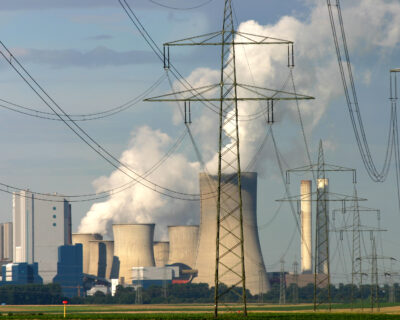Blogs

Is Tungsten a Good Conductor of Electricity?
When industries rely on materials with specific electrical properties, one key question often arises: Is tungsten a good conductor of electricity? Known for its incredible hardness and unmatched melting point, tungsten is a unique metal widely used in demanding environments. But how does it perform when it comes to conducting electricity?
In this article, we’ll explore tungsten’s electrical conductivity, compare it with other metals, and highlight its practical uses across various industries.
What is Tungsten?
Tungsten, also called wolfram, is a dense, silver-grey metal recognized for its exceptional hardness and the highest melting point of all metals—around 3422°C (6192°F). Found mainly in minerals like wolframite and scheelite, tungsten is extracted through a multi-step process of ore crushing, concentration, and purification.
Its standout physical properties make tungsten a top choice in fields that demand both strength and heat resistance—especially in electronics, aerospace, lighting, and industrial manufacturing.
What is Electrical Conductivity?
Electrical conductivity refers to how well a material can carry an electric current. Metals are typically good conductors because they contain free electrons that allow electric charge to flow easily.
Conductivity is measured in Siemens per meter (S/m). The higher the conductivity, the better a material is at transferring electricity. While tungsten is not the top performer in conductivity compared to some metals, it shines in high-temperature scenarios where others fall short.
Is Tungsten a Good Conductor of Electricity?
Yes, tungsten is a good conductor, especially under high temperatures.
At room temperature, tungsten has an electrical conductivity of around 18 x 10⁶ S/m. Although this is lower than silver or copper, tungsten remains reliable and efficient in extreme heat, where other metals may melt or lose performance.
It also has a low resistivity—about 5.5 x 10⁻⁸ ohm meters—which means it doesn’t resist the flow of electricity much, a trait desirable in many demanding applications.
How Does Tungsten Compare to Other Metals?
Let’s look at how tungsten’s conductivity stacks up:
| Metal | Conductivity (S/m) |
|---|---|
| Silver | 63 x 10⁶ |
| Copper | 59.6 x 10⁶ |
| Gold | 45.2 x 10⁶ |
| Aluminum | 37.8 x 10⁶ |
| Tungsten | 18 x 10⁶ |
While tungsten trails behind in raw conductivity, it excels where others can’t—maintaining stability and conducting electricity effectively at very high temperatures.
Practical Applications of Tungsten’s Conductivity
Tungsten’s unique blend of thermal stability and conductivity makes it indispensable in a wide range of applications:
1. Light Bulb Filaments
Tungsten’s high melting point makes it perfect for incandescent light bulb filaments, which must glow white-hot without melting.
2. Electrical Contacts
Used in switches, relays, and circuit breakers, tungsten provides durability and dependable conductivity under heavy loads and high temperatures.
3. Welding Electrodes
In TIG welding (Tungsten Inert Gas), tungsten electrodes create a stable arc without melting, ensuring precision in high-temperature environments.
4. High-Temperature Furnaces
Tungsten is used in furnace heating elements where it can retain its shape and conduct electricity reliably under intense heat.
5. Aerospace Components
Tungsten’s strength, density, and conductivity make it ideal for rocket nozzles, radiation shields, and other parts that face extreme conditions.
Factors That Affect Tungsten’s Conductivity
Several variables influence how well tungsten conducts electricity:
🔥 Temperature
As temperature increases, tungsten’s conductivity slightly decreases due to atomic vibrations. However, it still performs better than most metals under heat.
⚙️ Alloying
Combining tungsten with other metals like nickel or iron can reduce its conductivity but improve mechanical strength or wear resistance.
🧪 Material Purity
Impurities and defects in tungsten can block electron flow, lowering its conductivity. High-purity tungsten is preferred for maximum performance.
Everyday Uses of Tungsten Conductivity
Tungsten isn’t just used in heavy industry—its conductive properties benefit everyday technologies as well:
- Medical Devices: Used in X-ray tubes and radiation shielding.
- Consumer Electronics: Found in smartphones, laptops, and TVs for durable electrical connectors.
- Jewelry: Tungsten rings are known for strength and scratch resistance, though alloys used may have lower conductivity.
A Glimpse Into Tungsten’s History
Tungsten has been shaping innovation for over two centuries:
- Light Bulb Revolution: It replaced carbon filaments in early bulbs due to its superior conductivity and heat resistance.
- Wartime Demand: Widely used in military armor and high-temperature engine parts during the World Wars.
Conclusion: Is Tungsten a Good Conductor?
Yes, tungsten is a good conductor of electricity, especially when high temperatures are involved. While it’s not as conductive as silver or copper, its thermal endurance, low resistivity, and structural integrity make it indispensable in critical and high-performance applications.
Whether in welding torches, satellite components, or medical equipment, tungsten continues to play a vital role in modern technology due to its unique electrical properties.
Frequently Asked Questions
Q1: Is tungsten a good conductor of electricity?
A1: Yes. Tungsten is a reliable conductor, particularly in high-temperature environments, although not as conductive as silver or copper.
Q2: What are the electrical properties of tungsten?
A2: It has a conductivity of 18 x 10⁶ S/m and a resistivity of 5.5 x 10⁻⁸ ohm meters, retaining performance at high temperatures.
Q3: How does tungsten’s conductivity compare to other metals?
A3: Lower than silver, copper, and aluminum, but more reliable under extreme heat.
Q4: What affects tungsten’s conductivity?
A4: Factors include temperature, impurities, and metal alloys added during processing.
Q5: Where is tungsten used for its electrical conductivity?
A5: Common in light bulbs, welding rods, electrical contacts, and aerospace components.
Q6: Why is tungsten ideal for high-temperature use?
A6: It maintains its strength and conductivity where other metals would fail.
Q7: Is tungsten a poor conductor?
A7: Not at all. It’s a moderate to good conductor, especially in challenging conditions.
Q8: Can tungsten’s conductivity be improved?
A8: Yes, through increased purity and optimized alloy formulations.




